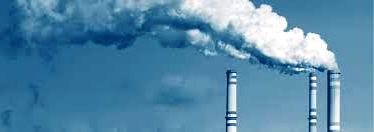Globally Pakistan ranks as the second highest country for annual PM2.5 levels, weighted by city population, according to the 2019 World Air Quality Report, jointly released by IQAir Group and Greenpeace.
Nearly 90 per cent of the 200 cities beset by the world’s highest levels of deadly micro-pollution are in China and India, with most of the rest in Pakistan and Indonesia, researchers reported on Tuesday.
Until recently, there was no government monitoring in Pakistan. The data provided in this report comes from low-cost sensors operated by engaged individuals and non-governmental organizations, said the report released on Tuesday.
New Prime Minister Imran Khan has cited air pollution as a key priority for his administration, and recently reinstated the monitoring infrastructure in Lahore, a program previously abandoned by the last government. Current anti-smog measures include stricter emission standards on factories, as well as fining heavily polluting vehicles and farmers burning crop stubble. Much more must be done however, to tackle emissions at the source, and shift to cleaner energy sources
According to the report, air pollution is responsible for nearly 22% of premature deaths in Pakistan. Several cities in Pakistan rank prominently among the most polluted cities globally. Gujranwala and Faisalabad, which rank third and fourth respectively, both experience annual average PM2.5 levels that are more than 10 times the WHO target for annual PM2.5 exposure. These cities observe ten times more annual hours in the highest US AQI bracket (250.4μg/ m3 ) than in the US AQI bracket which meets the WHO annual target.
Young Pakistanis and engaged communities have taken a leadership role in raising social awareness, growing available outdoor air quality data and demanding government action in Pakistan. Since 2017, the air quality monitoring infrastructure has grown to 46 stations as a result of contributions through the non-governmental organization Pakistan Air Quality Initiative (PAQI) and individual data contributors. In November, three teenagers sought legal action against the government of Punjab, claiming a “violation of their fundamental right to a clean and healthy environment,” demanding urgent action (Amnesty International, 2019).
According to the report, taking population into account, Bangladesh emerged as the country with the worst so-called PM2.5 pollution, followed by Pakistan, Mongolia, Afghanistan and India. China ranks 11th.
Particulate matter of 2.5 microns or less in diameter – roughly one-thirtieth the width of a human hair – is the most dangerous type of airborne pollution. Microscopic flecks are small enough to enter the bloodstream via the respiratory system, leading to asthma, lung cancer and heart disease.
Among the world’s megacities of 10 million or more people, the most PM2.5-toxic in 2019 was the Indian capital New Delhi, followed by Lahore in Pakistan, Dhaka in Bangladesh, Kolkata in India, Linyi and Tianjin in China, and Jakarta, Indonesia.
Next on the list were Wuhan – epicentre of the new coronavirus outbreak – along with Chengdu and Beijing. The IQAir report is based on data from nearly 5,000 cities worldwide. Most of the 7 million premature deaths attributed by the World Health Organisation (WHO) to air pollution are caused by PM2.5 particles, which originate in sandstorms, agriculture, industry, wildfires and especially the burning of fossil fuels.
“Air pollution is the world’s leading environmental health threat,” IQAir CEO Frank Hammes said. “Ninety per cent of the global population is breathing unsafe air.”
China’s average urban PM2.5 concentration dropped 20 per cent in 2018 and 2019, but last year it still counted 117 of the 200 most polluted cities in the world. All but 2 per cent of China’s cities exceeded WHO guidelines for PM2.5 levels, while 53 per cent exceeded less stringent national safety limits. The UN says PM2.5 density should not top 25 microgrammes per cubic metre (25mcg/m3) of air in any 24-hour period. China has set the bar at 35mcg/m3.





